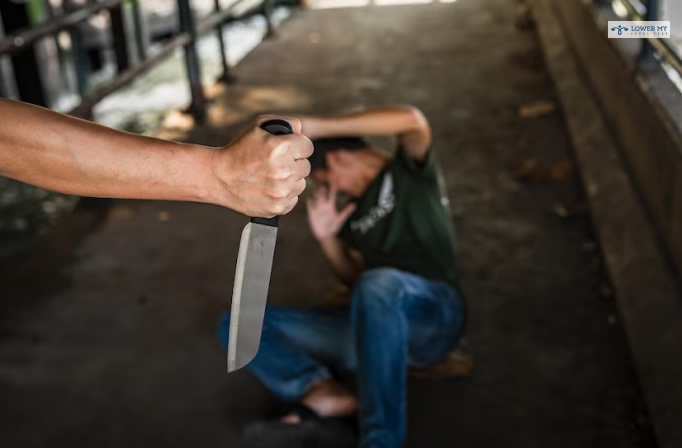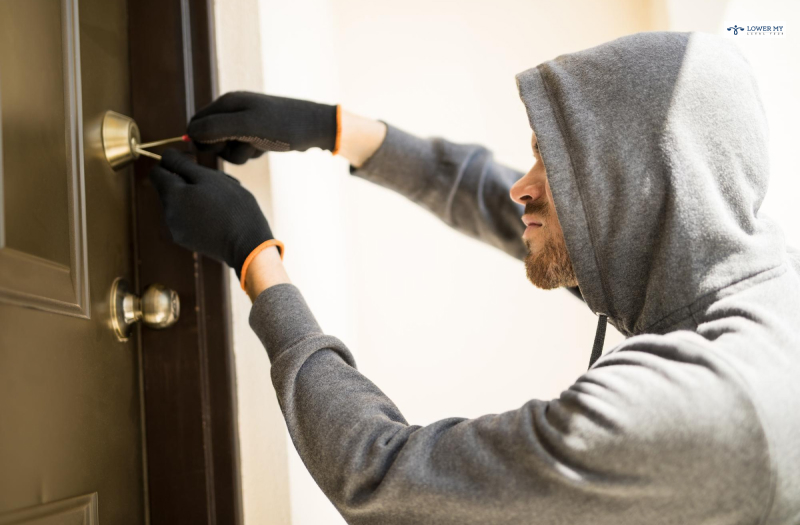In the United States, a felony is a category of crime. If you are facing felony charges, then it’s a serious matter. Moreover, a felony is the most severe kind of criminal offense in Texas. A felony is classified as such if the penalty carried by the crime’s conviction can be more than one year in prison. This tends to separate felonies from misdemeanors or infractions, which are other kinds of crimes that tend to carry lesser sentences than felonies. In this article, we will be talking about what a second-degree felony in Texas is.
Overview of Second-Degree Felony in Texas

In Texas, a second-degree felony is a critical criminal offense punishable by imprisonment. These crimes include irritation attacks, sexual attacks, manslaughter, robbery, and certain drug offenses. Transitioning from misdemeanors to felonies, second-diploma felonies carry harsher consequences because of their severity.
Conviction of a second-degree felony in Texas can bring about a prison sentence starting from two to 20 years, in conjunction with a maximum fine of up to $10,000. Moreover, individuals observed guilty of a second-degree prison may additionally face additional results, such as probation, network provider, and restitution to victims.
Furthermore, the criminal implications of a second-degree felony increase beyond the initial sentencing. Convicted felons may come across demanding situations in obtaining employment, housing, and expert licenses because of their criminal report.
Additionally, the type of criminal can impact an individual’s civil rights, which include their right to vote and own firearms. Moreover, Texas law imposes more advantageous consequences for repeat offenders, making it important for people facing second-degree felony charges to try to find legal illustrations directly.
In conclusion, second-degree felonies in Texas have intense effects that can appreciably affect a character’s life. Therefore, it’s imperative for the ones accused of such offenses to understand their rights and search for competent legal counsel to navigate the complicated legal procedure.
Severity of Second-Degree Felony

Second-degree felonies constitute a class of criminal offenses with severe implications under the law. Understanding the severity of second-degree felonies calls for a complete exam of their nature, potential consequences, and societal effects. Transitioning into the discussion, it is imperative to first delineate the traits of second-degree felonies earlier than delving into their results.
To start with, second-degree felonies embody a huge range of offenses that can be deemed sufficiently severe to warrant full-size punishment. These offenses generally involve moves that pose sizable harm to individuals, assets, or society as an entire. Transitioning to the specifics, examples of second-diploma felonies encompass aggravated assault, housebreaking, possession of managed substances with a rationale to distribute, and sure varieties of sexual attacks.
Transitioning further, the severity of second-degree felonies is underscored by way of the capability consequences related to conviction. Individuals convicted of second-degree felonies face substantial prison sentences, generally ranging from many years to a long time, depending on the jurisdiction and the instances of the offense. Moreover, transitioning to the monetary aspect, fines accompanying these convictions may be substantial, frequently amounting to heaps or even tens of lots of dollars.
Additionally, the collateral outcomes of a second-degree felony conviction may be profound and a way to achieve it. Transitioning to societal implications, people with felony facts regularly encounter extensive limitations to employment, housing, and schooling, efficiently hindering their capacity to reintegrate into society and lead effective lives. Furthermore, the lack of certain civil rights, including the right to vote or possess firearms, in addition compounds the impact of a prison conviction.
Judicial Perspective
Transitioning to the judicial perspective, prosecuting second-degree felonies is a priority for law enforcement groups and prosecutors due to their extreme nature. These cases frequently involve exhaustive investigations, complex felony lawsuits, and considerable resources allocated to make certain justice is served.
Transitioning to the court, trials for second-degree felonies can be lengthy and contentious affairs involving professional witnesses, forensic proof, and emotional testimony from victims and witnesses.
Sentencing
Furthermore, transitioning to the realm of sentencing, judges are tasked with weighing different factors, together with the character and severity of the offense, the defendant’s criminal history, and mitigating or annoying situations, in figuring out the correct punishment.
Transitioning to the correctional device, individuals convicted of second-degree felonies can be sent to incarceration in state or federal prisons, where they’re separated from society and supplied with constrained possibilities for rehabilitation.
Rehabilitation efforts
Transitioning to rehabilitation efforts, a few jurisdictions provide packages aimed toward addressing the underlying problems that contribute to crook conduct, such as substance abuse or mental fitness problems.
These packages may additionally offer options for conventional incarceration, specializing in rehabilitation and reintegration into society. Transitioning to recidivism and reducing the probability of reoffending are key intentions of those tasks because they not only benefit people but also enhance public protection and decrease the weight of the criminal justice machine.
In conclusion, second-degree felonies constitute an enormous category of criminal offenses with intense implications for individuals and society at large. Understanding the severity of these offenses requires a comprehensive exam of their nature, ability penalties, and societal impact.
Transitioning from the analysis, it’s far glaring that addressing second-degree felonies requires a multifaceted technique encompassing deterrence, punishment, rehabilitation, and societal support.
Minimum and maximum sentencing requirements for second-degree felony

The mandatory minimum and maximum prescribed sentencing requirements for second-degree offenses help the judicial system determine what kind of punishment everyone will receive after their trials. Moving on to a discussion of the legal provisions on the sentencing of such cases, however, must be made.
This goes for those who have been sentenced to second-degree felonies. As per the minimum sentencing requirements, they usually ought to serve out some predetermined length of imprisonment that has been explicitly established by the law.
These sentences are considered the base penalty for an offense, which reflects the kind of offense concerned. If the law imposes a minimum sentence for second-degree felonies, the number of years to serve might fluctuate from location to location or the seriousness of the crime, usually ranging from several years to a decade or even more in jail.
Another is that the maximum sentencing legislation will determine the worst punishment that can be imposed when a second-degree felony is found guilty. These sentences could be equated to the highest sentences and are indicated in the law as a reflection of the most penalties allowable for the crime in hand.
The sentence that maximum offenses of second-degree felonies are considerable cannot be taken for granted. The punishment lies somewhere between a few years up to several decades in certain circumstances and jurisdictions.
Judges in the discretion category will usually be given discretion during the sentencing framework to impose a punishment within the range according to the statute. These judges are not limited to imposing sentences, but they can weigh these special factors that are different from each case and provide the punishment that fits each case.
Right before where the accused is sentenced is a time when the judge, prosecutor, and maybe the victim can present their arguments and evidence that would support the penalty given to the accused.
The minimum and maximum sentencing range remains quite a crux in the criminal justice system that favors felony convicts to be placed in such categories when they are sentenced. Within transition, a course of events is revealed, which must comply with the upper legislation’s requirements, the district judge’s rights, and the case’s individual peculiarities.
List of serious offenses classified as second-degree felonies

Second-degree felonies are a multitude of savage crimes that are all those types of offenses because of the extent of damage they do to individuals, property, or the whole community. Here is a list of some common serious offenses classified as second-degree felonies. Here is a list of some common serious offenses classified as second-degree felonies.
Aggravated assault
A person willfully and intentionally in a flash causes major physical injury to another person, or someone dies because of the action.
Burglary
By unlawfully getting into a building or structure, the defendant intended to commit a felony or the theft of something belonging therein.
Possession of controlled substances with intent to distribute
If you get caught with drugs and it’s proven that you’re going to sell them or distribute them to other people.
Robbery
It means using or even trying to use force or an act of making someone believe something bad to take the property of another person.
Sexual assault
The penal code punishes anyone who indulges in sexual exploitation or indecent act like rape and sexual battery.
Manslaughter
A crime of sustaining the death of another person by making reckless or irresponsible decisions.
Child abuse
Using force on a child to cause physical or mental injury, such as neglect or sexual abuse.
Arson
Pre-planned burning of a building, vehicle, or property, with the burning process being the planning stage.
Kidnapping
Taking someone by illegal force or doing so through deception to be sold or to obtain other sums of money.
Fraud
Involving in disingenuous or misleading practices that help to bring unrighteous financial returns, for instance, through imposture or embezzlement.
It must be noted, though, that the classification of offenses as second-degree felonies depends on the jurisdiction, and there might be other offenses that are included in the statute but follow the same class that falls under the second-degree felony.
Conclusion
Finally, second-degree felony is a severe offense, and offenders are likely to be sentenced to jail terms and subjected to heavy fines. Indeed, with a conviction for this kind of crime, the social consequences are also lifetime effects, such as deprivation of some constitutional rights and foreclosure of many employment possibilities.
Such harshness calls attention to the role of a solid legal defense and compliance with due process restrictions. Furthermore, the security of society and the avoidance of arresting offenses again are also important in the process of judging second-degree felony cases.
These, therefore, point the way for the legal system to summon, delicately, its efforts for punishment and rehabilitation to take care of the root causes of crime and public safety.
Read More…
What Are Inchoate Crimes Under US Law?
What Are Statutory Crimes Under US Law?
Suborning Perjury: A Comprehensive Guide






